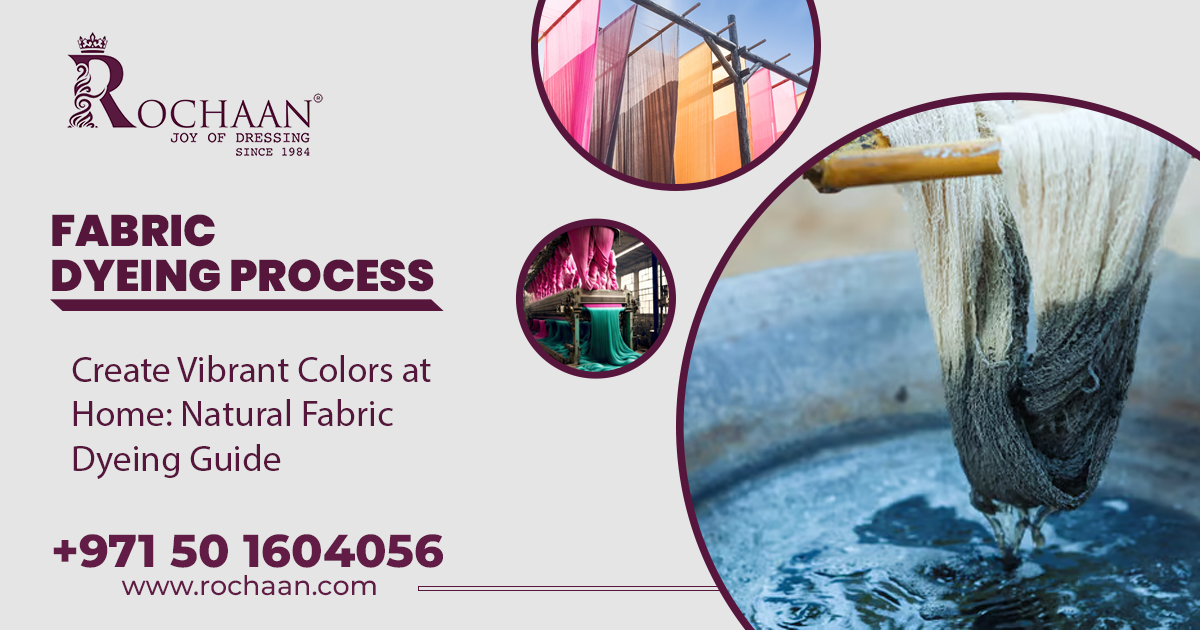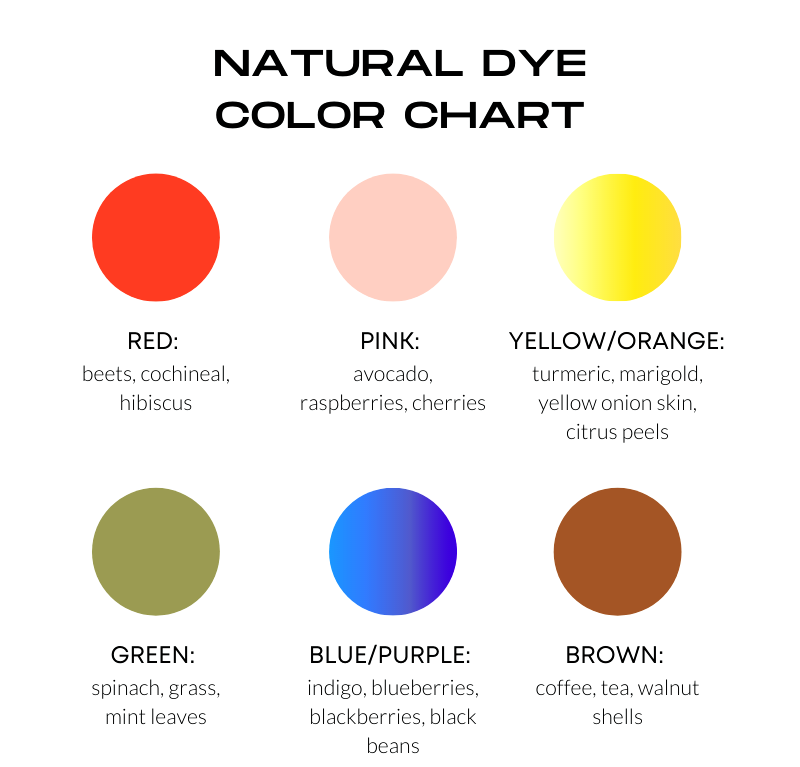Natural fabric dyeing is an effective way to add some colorful, eco-friendly hues to your home. Furthermore, Wait until you throw that orange peel or leftover vegetable! With common grocery store supplies, you can transform basic fabrics into one-of-a-kind, vibrant pieces.

This Blog will lead you through
Natural dyeing with kitchen or backyard ingredients. We will take you through all the fabric dyeing process, from gathering materials to finishing your cloth.
Why Natural Fabric Dyeing?
Thousands of years of tradition support the use of natural dyeing. Several benefits include:
- Eco-friendly
- Varied Colours
Fabric dyeing can give old clothes, thrift store finds, or household items like cloth napkins and pillowcases a new look. This craft is creative and practical, making it a perfect DIY or sustainability-related project for most people.
Best Fabrics for Natural Fabric Dyeing
- Natural Fibers: Your favorite natural fabric dyes are those based on cotton, linen, silk, or wool. Natural fibers have been undone cellular structures that absorb the dye easily.
- Synthetic Fabrics: Avoid fibers such as polyester or rayon. These don’t absorb natural dyes, leaving you with colorless and uneven colors.
Natural Dye Chart
- Blue Dye: Blueberries, blackberries
- Red Dye: Raspberries, beets
- Yellow and Ochre Dye: Lemon and orange peels, turmeric
- Green Dye: Spinach leaves
- Orange Dye: Onion skins
- Purple Dye: Red cabbage leaves

Feel free to try other plant materials and create your unique shades. Dyeing fabric can be as playful and creative as you want!
How to Make Natural Dyes: Step-by-Step Guide
Materials Needed
- One cup of chopped fruit or vegetable material
- Saucepan
- Two cups of water
- Two to three tablespoons of vinegar or salt (for mordanting)
- Strainer
- Glass container or jar
These can be readily obtained and are the heart of the natural solid dyes that hold well on the fabric.
- Step 1: Preparation of Dye Material
Take one cup of your preferred fruit or vegetable material. More material will result in a more vital dye. You can work with such components as blueberry skin, red cabbage, or turmeric to create the shades listed below.
- Step 2: Steeping the Dye Bath
Chop your plant material and put it into a saucepan. Add two cups of water. For a batch of any size, multiply the amount of water you add by two.
- Step 3: Add the mordant
Now, add a mordant for the central agent with which you are going to dye your cloth. Something that causes the dye to fixate on the fabric is called a mordant. You can use two to three tablespoons of vinegar or salt as a mordant.
- Step 4: Heating and extracting the dye
Now place your burner to medium heat and bring this mixture to a simmer. Simmer for about an hour. The longer you simmer, the thicker the color will be, as well as richer.
When you’re done simmering, remove this mixture from heat and allow it to cool at room temperature. Strain this mixture into a glass container, discarding the leftover plant material. What’s left after straining is your natural dye.
Natural Dyeing
- Step 1: Prepare Your Workspace
Cover your working space with an old cloth or plastic sheet, which will stain the dye. Wear gloves over your hands, as this may stain them.
- Step 2: Working with the Fabric
Wet the fabric before immersing it in a dye bath, and apply dye evenly and abundantly on the fabric.
- Step 4: Apply the Dye to the Fabric
Creating Unique Patterns Soak the cloth in the dye bath. The longer you keep the fabric inside the dye, the deeper and more vibrant the color. For a unique ombré effect, only submerge some of the fabric, letting parts stay out of the dye. However, you can apply rubber bands, clothes pins, or masking tape to create unique patterns. These items act as resist-dye designs, preventing the dye from reaching certain areas and creating artistic patterns in your fabric dyeing process.
- Step 4: Dry and Fix the Color
Following dyeing, allow the fabric to air-dry flat. Once it is properly dry, press it with high heat to permanently fix the colors.
Editors’ Tips on Natural Dyeing
- Re-dye If Necessary: Washing repeatedly fades the colors, but you can re-dye your fabric as needed.
- Wash Separately: To avoid bleeding to other garments, it is advisable to wash the naturally dyed fabric separately for the first few washes.
How to Successfully Dye Fabric Naturally
- Try Ingredients
With natural fabric dyeing, creativity takes its room. Experiment with different kinds of fruits, vegetables, herbs, and more. It has been proven that these ingredients can be mixed to produce various colors. In addition, only the shade might come out differently than hoped because it depends on the ingredient’s freshness and how long it was left in the dye bath.
- Natural Mordants
While vinegar and salt are common mordants, other natural mordants consist of alum or tannins, which could be used to give colors with distinguishing nuances. The dye reactivity of each mordant is different, thus affecting the color produced.
- Layering Colors
If you are feeling adventurous, layer the colors. For example, dye your fabric yellow, dry it, and then dye it blue. The result: rich green. Layering colors is the best way to play with the potential of natural dyes.
Eco-Friendly Benefits of Natural Dyeing
- Less Waste in the House: Use the peel, which otherwise ends up being waste in your kitchen.
- No Harmful Chemicals: Compared to commercial ones, natural fabric dyes contain nothing dangerous, such as toxins, which do not mess up water bodies or cause health problems when used to make the colors.
Common Problems and Solutions of Natural Fabric Dyeing
Challenge 1: Color Fading
Natural fabric dyeing experiences the common problem of fading colors after multiple times of washing. Decrease this with applying a mordant at the dyeing stage, and never use hot water when washing.
Challenge 2: Uneven Coloring
At times, the color may not distribute evenly throughout the fabric. Before immersing the fabric in the dye bath, dampen the cloth and occasionally stir the fabric to ensure that the color is deposited evenly.
Conclusion
It’s an incredibly pleasing and eco-friendly activity that gives life to your clothes and household linens in ways you never knew possible. Dyeing fabric using fruits, vegetables, and other plant materials is very easy and can effectively create unique colors in each batch. Therefor, you can use it while dyeing an old T-shirt or repurposing thrifted linens to get gorgeous, eco-friendly results with ingredients you probably already have on hand.
Organic dyeing enables you to create some of the most unique designs while achieving sustainability through reducing waste and using no adverse chemicals. So go ahead and experiment with the beautiful world of natural fabric dyeing!
Visit our retail store fabric dyeing.
FAQs
What fabrics work best for natural fabric dyeing?
Some fabrics work better; the best are natural fibers such as cotton, linen, and silk because they readily have a natural capability, while synthetic materials like polyester or rayon do not hold up well.
How do you get the color to last longer once placed on these naturally dyed fabrics?
Using a mordant, like vinegar or salt, will improve the dye’s capacity to bond to the material. Ironing your fabric after dyeing ‘locks in’ the color. Rede as needed, and wash in cold water to limit fading.
Can I mix different natural ingredients to create unique colors?
Ah, totally! Try out different fruits, veggies, and herbs, and then you can combine them to mix and layerades by layering them.
